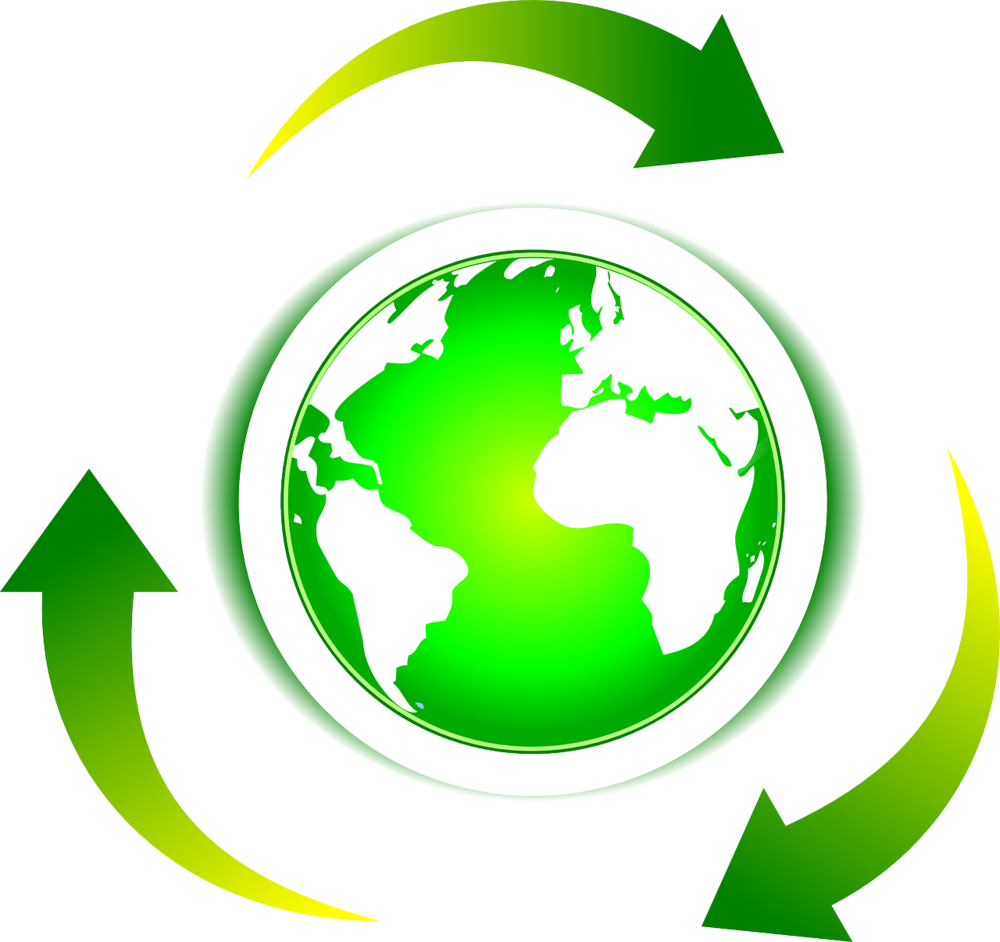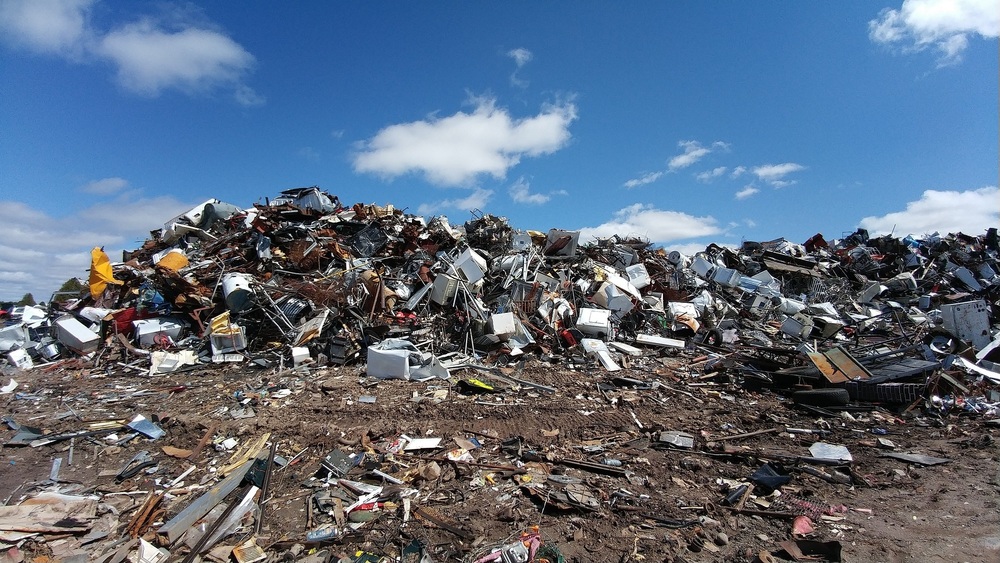This article is part of a blog series on new building materials used in the construction industry, exploring what they are, and why they are cheaper and more durable than traditional materials.
The word recycling is tantamount to a four letter word in the construction industry, but that is likely because very few people know how the BIM process works. It is a waste management system allowing misused, unused, or obsolete products or materials to be transformed into something that is durable and sustainable.
By scaling down the traditional methods of waste disposal you can:
- reduce energy consumption
- lower the usage of natural raw materials
- diminish pollution for both air and water
- cut down greenhouse gas emissions.
Sustainability and recycling.

Construction and demolition, or C&D, debris is estimated to be nearly one-quarter of the USA's total waste output every year.
What do we include in the construction industry when we measure waste?
- Concrete
- asphalt
- wood
- other building wastes.
Sustainability implies that we stop relying on landfills for waste disposal. Only 34.6% of the USA's total waste gets recycled, some gets burned for energy, and the rest gets sent to landfill - of which the capacity is getting thinner.
The environmental impact of the construction industry
The Architect, Engineer, Construction, and Operation (AECO) industry produces a lot of waste at every stage of a built asset:
- extracting raw materials
- manufacturing
- transportation
- construction
- demolition.
Poor BIM planning
Disposing of general and hazardous waste is a big factor in materials and products going into landfills. It includes:
- ordering products over needs
- harmful or mistreated materials
- insufficient storage
- weather damage to materials.
Construction uses chemicals, paint, and fuel. If disposal of these harmful wastes, is not planned and responsibly disposed of at a hazardous waste facility, it could damage the environment. To avoid the impact this would cause on the planet, these substances should be stored in an impermeable area, when not in use, or disposed of.
It is critical to plan and manage construction waste properly to establish sustainable and safe use of resources in construction and demolition by:
- eliminating waste as much as possible
- minimizing waste production
- reusing materials
- recycling waste.
How does an efficient waste management system work?

For each project before construction starts, we recommend that a waste management plan is established to:
- accurately calculate how much material is needed on-site,
- maximize the reduction of generated waste.
What should be in the plan?
Your plan should include:
- the possible causes of waste generation
- the areas on site that would be suitable for recycling or composting
- the places where waste crates/bins are located
- the materials that can be recycled.
Establish your process to select a supplier
There are some criteria for appointing a new supplier for a project, either on construction sites or when the built asset is in use. Some examples of these might be to see if:
- they provide waste containers
- they remove and reuse recyclable material
- they collect the waste produced.
Create your processes to recycle
To avoid putting too much waste in skips you should make recycling bins easily accessible and available.
It is important to design specific recycling processes for each project. This implies research before you can incorporate them into your waste management plan.
Define your packaging criteria
The packaging criteria you should look at are:
- Should you buy in bulk to reduce expenses, and waste from individually packaged materials?
- Should the packing be recyclable and how will you prioritize it?
- Should you reuse your packaging? For example, bags and canisters could be reused to stock materials.
Rework scraps
Don't throw away your scraps and offcuts. Reworking scraps will allow you to:
- avoid using new materials
- have them available when required
- sell them back to your suppliers.
Save money
If your construction sites and building maintenance projects are well organized, they will be leaner, producing less waste. You will then be able to increase your productivity and efficiency which will save you money that could go towards:
- allocating areas for recycling, waste, and storage
- indicating to workers where they have to dispose of various waste materials
- advocating sustainable construction best practices.
- donating recovered materials to charities, will not only help you reduce your waste but also will reduce your tax burden
- reducing transportation and packaging costs by reusing materials
- avoiding production and overhead costs of generating new raw materials or storing excess goods
- training workers to reduce their personal waste output.
Gather and develop waste
There are several ways of gathering waste in the construction industry depending on the type of building components you want to recycle:
- asphalt, concrete, and rubble can be transformed into aggregate or new asphalt and concrete products
- wood can be converted into furniture, mulch, compost, and
other products
- metals including steel, copper, and brass are valuable materials to remodel
- cardboard packaging, from home-building sites or building maintenance, is classified as general waste, so it is collected through drop-off centers, pavements’ collection, deposit, or refund programs.
Once collected, waste materials are transferred to material recovery facilities or recycling centers, to be:
- evaluated
- washed
- transformed into materials that can be manufactured.
Another possibility, instead of recycling, is selling the recyclable waste materials to be reused or manufactured. Prices fluctuate according to the offer and demand ratio.
Manufacturing
Manufactured waste materials can be reconstructed into useful products, including:
- paper towels
- newspapers
- steel cans
- plastic or glass containers.
Advantages of Recycling

Conservation of the planet's environment
Natural resources need to be protected; recycling waste materials conserves the environment. For example, recycling timber or packaging made of paper or cardboard could reduce deforestation.
Pollution generated by the construction industry is important due to the wastage of plastics and chemicals. To reduce levels of pollution, the products can be reused rather than just discarded carelessly. For example, combining microalgae with sunlight, water, natural binders, and ambient CO2 can produce a bio-cement better than cement-based concrete.
The traditional method of waste disposal is to burn waste. This is impacting global warming by generating:
- carbon dioxide
- sulfur
- nitrogen.
Transforming and reusing materials, rather than burning them, has zero or minimal impact on the environment.
Recycling used and old materials, means that new products can be manufactured without extracting or mining fresh raw materials to conserve natural resources like minerals, water, and wood, to sustain and optimize their use.
Manufacturing raw materials also requires a lot of energy. Recycling reduces energy consumption. Scientists have found new ways to manufacture products requiring less natural resources making the transformation process easier and quicker.
Reduce waste in landfill sites
Transforming old and used materials into new products will help reduce the use of landfill sites, decreasing land, air, and water pollution.
New sorting technologies help to identify the grade and type of plastic automatically.
Resources being used sensibly and sustainably, in the recycling process, helps the construction industry to keep their production of building materials at their actual level, without impacting the future.
The more we recycle, the more eco-conscious we become, as we perform more eco-friendly activities.
Generate jobs
Recycling creates job opportunities, setting up new recycling facilities requiring collection and delivery activities performed by a lot of manual labor.
Make and save money
Selling waste for cash helps to save the environment and make money in exchange.
Buying recycled materials is less expensive than fresh raw materials which helps to reduce your outgoings.
Disadvantages of Recycling

High investment
A new waste recycling unit requires high capital expenditures:
- building costs or upgrading the recycling unit
- buying various types of utility vehicles
- creating programs to educate local people.
Unhygienic, unsafe, and unsightly facilities
Send waste to landfill contributes to:
- the development of debris and dust
- the spread of infectious diseases
- the proliferation of harmful and dangerous chemicals
- health risks for recycling workers
- damaging the environment with pollutants, such as chemical stews
- unsightly views.
Poor quality
Products manufactured from recycled waste may not be as durable as new products. The materials used in recycled products may have been used many times, making them more fragile.
The quality of products made with recycled waste materials may be poor if the initial raw material was damaged.
Costly
Recycling waste is an expensive operation. It requires:
- maintaining the unit and utility vehicles
- upgrading the processing facility
- educating residents by organizing seminars.
Not popular
Despite the fact that recycling is good for the planet it has not been very popular and is underdeveloped.
Recycling is still far from preventing deforestation and oil spills on construction sites.
Recycling jobs are numerous, but the work is not very interesting, generating:
- low morale workforce
- poor quality of life
- low pay
- poor health conditions.
Energyvore
Recycling doesn't happen for free, it requires a lot of energy to transform the waste products and materials into something reusable. The waste need to be
- transported in utility vehicles (electric or petrol powered)
- sorted
- cleaned
- processed in various factories.
In Conclusion

Weighing the advantages and disadvantages of recycling, the construction industry can significantly improve the process to effectively bring unlimited benefits to the environment and humanity.
Most firms intend to establish their best practices, but work gets in the way, and they are never created. £220 million worth of material is wasted in landfills yearly in the UK.
Driving Vision's BIM expertise diagnostic finds how to eliminate waste (time and material) and improve your margins and the quality of the information provided during the design and construction phases.
A Driving Vision expert will conduct the interviews online, issue a report, and discuss our findings with you. Together we will decide the best way to implement the solutions at your pace and according to your budget.
Implementing BIM can be daunting, but Driving Vision is here to help you at the pace you are comfortable with. Get started by getting in touch now







